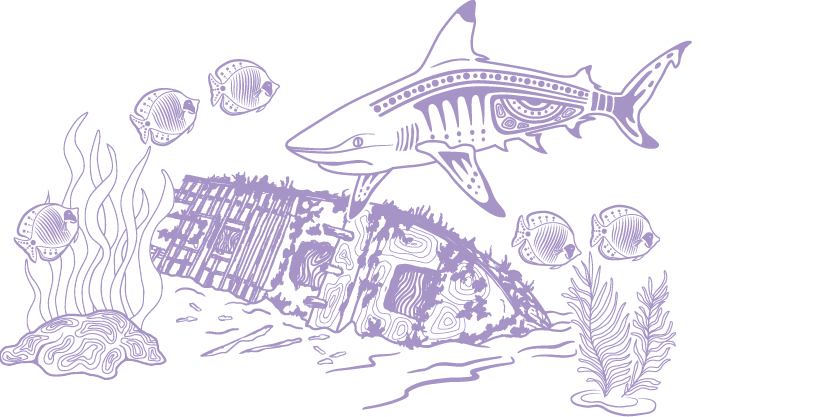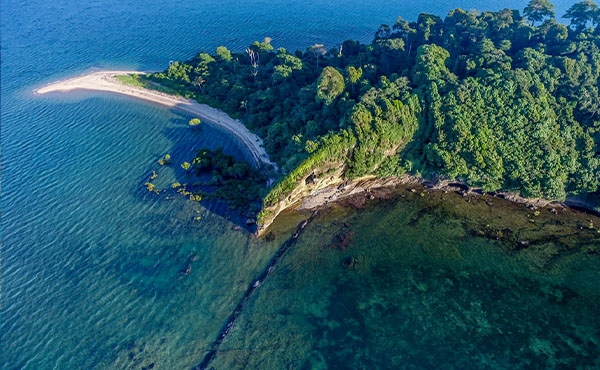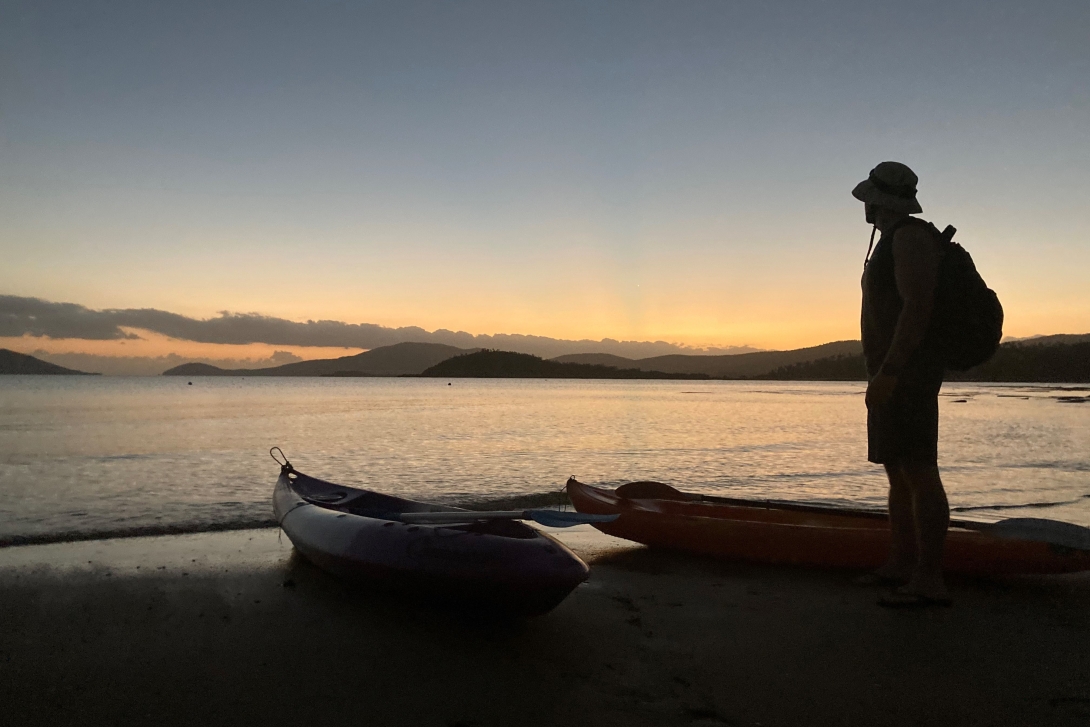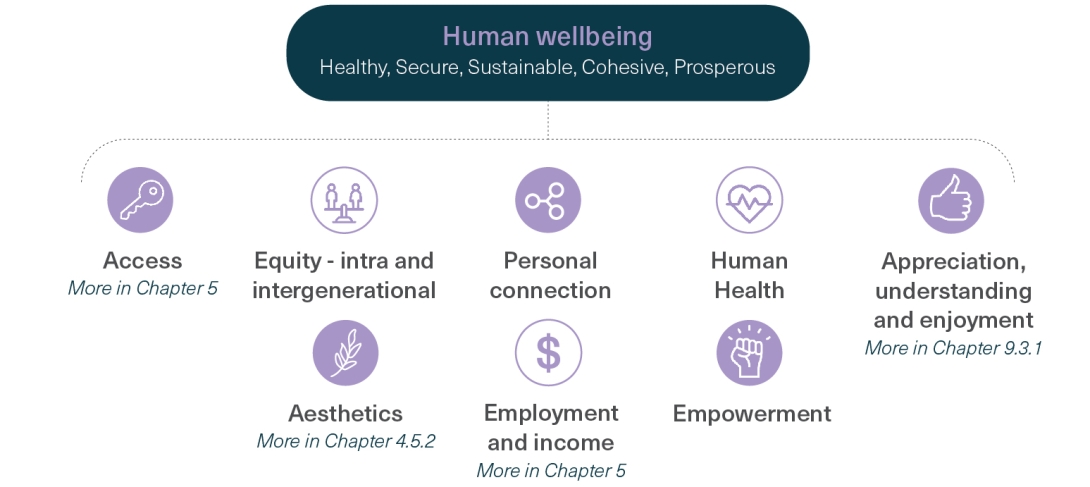Access refers to people’s ability to enter and use the Reef and its resources in the past, present and future. Accessing and interacting with nature improves physical and mental health and general wellbeing.1075 The COVID-19 pandemic affected people’s access to the Reef and the impacts varied depending on a person’s residential proximity to the Reef and different state regulations. The restrictions on movement made access easier for people that live near the Reef and proportionately more difficult for those living further away and unable to travel. All international travel to Australia, and therefore the Reef, was suspended from March 2020 until February 2022; and resumed with a range of restrictions. During this time, there was a diversion of people away from centralised workplaces and large population centres to regional areas, with the largest internal migration to Queensland (Section 6.2.2).1161
In 2021, more than two thirds of surveyed Catchment residents do not see access to the Reef as a problem.1075 The majority of respondents (83 per cent) reported visiting the Reef at least once in their lifetime and half had visited within the preceding 12-month period. Catchment residents predominantly access inshore areas of the Reef, estuaries and waterways.1075 In general, people continue to enjoy good access and continue to visit the Reef.
The aesthetic heritage values important to wellbeing are discussed in Section 4.5.2.
Understanding the ecology of the Reef and people’s relationships to it has implications for personal connection, empowerment, and stewardship.1160 Some Social and Economic Long-Term Monitoring Program results suggest a medium knowledge of the Reef. This value also considers people’s perceptions about Reef management and scientific knowledge. Another indicator of understanding is people’s perceptions of the health of the Reef, threats, and threat severity, including climate change (Section 9.3).1162 Residents’ perceptions about management of the Reef vary widely. The overall average suggests dissatisfaction with how the Reef is managed, encompassing responses ranging from very positive views to the very negative end of satisfaction with Reef management. Slightly more than 50 per cent of those surveyed felt there was a lack of opportunity to have a say how the Great Barrier Reef is managed, with 70 per cent reporting they did not feel they have any influence over how the Reef is managed.
The two most highly trusted sources of information about the Reef are scientists and the Great Barrier Reef Marine Park Authority;1075 newspapers and social media were the least trusted information sources. The level of trust in scientists for information, while reported as high in 2021, has decreased since the 2017 survey but is still higher than in 2013. In 2021, trust in the Reef Authority as an information source was at similar levels to 2017.1075
Human health can be linked to visiting the Reef, which in turn, provides benefits to wellbeing. Most survey respondents who had visited the Reef in their lifetime reported that their visit had made them feel physically better. They reported both physiological and psychological benefits from the Reef, including helping them unwind and destress, feeling restored and relaxed, being alert and better able to concentrate.1075
People’s feelings of strong personal connection to the Reef continues.1075 In general, individuals who visit the Reef report a strong feeling that the Reef is part of their identity; a sentiment that has remained the same since 2017. Most Catchment residents (90 per cent of those surveyed) expressed pride that the Great Barrier Reef is a World Heritage Area and have a strong sense of belonging to where they live. Feelings of pride in the Reef were slightly lower in 2021 than in 2017. Residents place high value on the mere existence of the Great Barrier Reef and its biodiversity. Of respondents who had visited the Reef in the past 12 months, less than 14 per cent viewed the Reef as in poor or very poor health. People perceived coral and seagrass to be in poorer health than beaches and islands.
Equity relates to fairness in the distribution of benefits and impacts across the community. It is both intra- and intergenerational, meaning there are considerations for social equity within each generation, as well as between generations. Approximately three quarters of Catchment residents surveyed place a high value on the bequest value of the Great Barrier Reef (bequest meaning passing on benefits to the next generations).1075
Empowerment is the process that enables people and groups (such as businesses, community groups, individuals and Traditional Owners) to undertake actions and participate meaningfully in the protection and management of the Great Barrier Reef. Empowerment is interconnected with, and results from, a combination of the other social heritage values. A good indicator of empowerment is the ability to successfully engage in stewardship activities. In 2021, general stewardship sentiment towards the Reef is reported to be high, while actual knowledge and feelings of personal capacity to effect change are low.1075,1163 Approximately 90 per cent of survey respondents reported engaging in simple best practices relevant to Reef health. People’s understanding of the threats to the Reef, particularly climate change, has increased since the Outlook Report 2019, while feelings of empowerment to address these issues are low. In a national survey, approximately 75 per cent of respondents agreed that action should be taken to help the Reef and supported the use of large-scale restoration and adaptation technologies.1162
Employment and income potential of Catchment residents may be affected by Reef health. In 2021, respondents mostly did not feel that their employment prospects or financial situation would be negatively affected, or that they would choose to relocate out of the Region, if the health of the Reef declined. While respondents did not think a decline in the health of the Reef would make living in the Region undesirable, about half felt their lifestyle would be negatively affected (Section 6.2.1).
Enquiries into the human dimensions of the Reef have been notably extended since 2019. This additional evidence contributes to the social heritage values of the Region being in a good condition.





